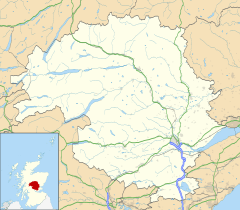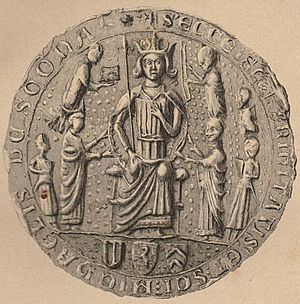Scone, Scotland facts for kids
Quick facts for kids Scone
|
|
|---|---|
| Town and former national capital | |
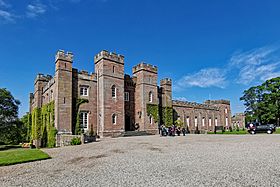 Scone Palace |
|
| Population | 5,030 (2020) |
| OS grid reference | NO134259 |
| • Edinburgh | 33 mi (53 km) |
| • London | 364 mi (586 km) |
| Council area | |
| Lieutenancy area | |
| Country | Scotland |
| Sovereign state | United Kingdom |
| Post town | Perth |
| Postcode district | PH2 |
| Dialling code | 01738 |
| Police | Tayside |
| Fire | Tayside |
| Ambulance | Scottish |
| EU Parliament | Scotland |
| UK Parliament |
|
| Scottish Parliament |
|
Scone (pronounced "skoon") is a town in Perth and Kinross, Scotland. It's famous for its long history. The original medieval town of Scone was once a very important place. It grew up around a monastery and a royal home.
In the early 1800s, the old town was moved. A new palace was built where the old town used to be. This new palace was built by the Earl of Mansfield. So, today there's a modern village called Scone. The old medieval village is now known as Old Scone.
Both Old Scone and the modern Scone are in the historic area of Gowrie. They are also in the old county of Perthshire. Old Scone was once the historic capital of the Kingdom of Scotland. In the Middle Ages, it was a key royal spot. Kings lived there and were crowned there. The town of Perth and the Abbey of Scone grew up near this royal site.
Contents
Scone and Scotland's Kings
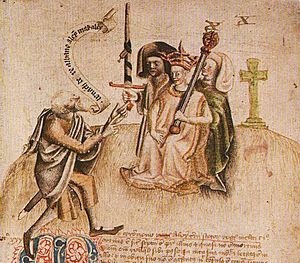
Scone was very important for Scottish kings. It was often called "Scone of the High Shields" or "Scone of the Noisy Shields" in old poems. Scotland itself was sometimes called the "Kingdom of Scone" on maps. This shows how central Scone was.
Like Tara in Ireland, Scone was a special place for crowning kings. In 1163 or 1164, King Malcolm IV called Scone Abbey the "principal seat of our kingdom." This meant it was the main place for the king. Back then, the king ruled more than just the Kingdom of Scotland. He also ruled areas like Lothian and Strathclyde. Kings traveled a lot, so Scone was not a capital city like we know today. But it was still seen as the "Royal City of Scone."
Historians think Scone might have been a village or religious center as early as the 5th century AD. It became truly important in the 9th century. This was when the Pictish and Gaelic kingdoms joined together. Scone played a big role in forming the ancient Kingdom of Scotland. In the 9th century, Kenneth MacAlpin brought a special stone to Scone. This stone was used for coronations and became known as the Stone of Scone.
In the 12th century, Scottish kings wanted to make Scone an even stronger royal center. King Alexander I of Scotland "re-established" a priory (a type of monastery) at Scone around 1114. This was probably to confirm Scone's important status. There's evidence that an early Christian group called the Culdees were at Scone even earlier. They later joined with the Augustinian canons.
In 1124, King Alexander I invited merchants from England to trade at Scone. At that time, the Tay River was deep enough for ships to reach Scone. But this also meant Vikings could sail up the river to raid. In 904, a battle was fought near Scone between the Scots and the Vikings. Over time, the river near Scone became less navigable. Ships also got bigger. This led King David I of Scotland to create a new town, Perth, further down the river. Perth is about 1 mile from Old Scone.
Coronation Traditions at Scone
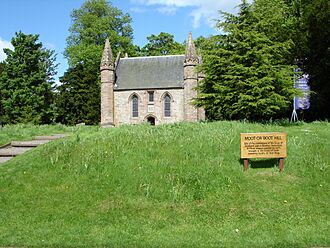
Scone was the traditional place where Scottish kings were crowned. It was linked to old traditions of kingship. The famous Stone of Scone was a key part of these ceremonies. Legend says the stone was brought to Scone from Tara in Ireland. This stone was very important for crowning kings.
In the 12th century, Scottish kings started to become more like French rulers. When King David I of Scotland was crowned in 1124, he didn't want to take part in some of the old Scottish ceremonies. But the bishops convinced him to do it. Even with these changes, the coronation ceremony at Scone continued. Scottish kings were crowned there until 1651. Charles II was the last King of Scotland to have his coronation at Scone.
Kings continued to live at Scone for many years. Important meetings of the Scottish parliament also happened there. In 2007, archaeologists found where the medieval abbey stood. This helps us imagine where the Stone of Scone was kept. It also shows where kings like Macbeth and Robert the Bruce were crowned. After a Christian ceremony in the abbey, they would go to the Moot Hill for older, traditional parts of their crowning.
Later History of Scone
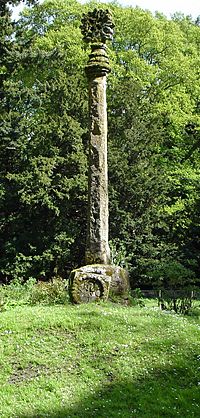
Scone's role as a "capital" became less important over time. The abbey itself had ups and downs. It was damaged by fire and attacked during the First War of Scottish Independence. The Stone of Scone was even stolen during this time.
The abbey was a popular place for pilgrims. People came to see the skull of Saint Fergus, which was kept there. The abbey and village also kept old festivals alive. One famous one was the Ba' of Scone, a medieval game like football.
In the 16th century, the Scottish Reformation changed everything for monasteries. In 1559, a mob attacked Scone Abbey. They were stirred up by the reformer John Knox. The abbey was badly damaged. Monks continued to live there until about 1640. After that, religious life continued only in the local parish church.
In 1606, Scone was given to David Murray. He became Lord Scone. The abbey building was still in good shape. The Viscounts lived there and hosted important guests. King Charles II was crowned there in 1651.
The Murrays of Scone supported the Jacobite cause. This was a movement to bring the Stuart kings back to the throne. In 1715, James III (the "Old Pretender") used Scone Palace as his base during a rebellion. He tried to gather support there. His son, Bonnie Prince Charlie, also stayed at Scone Palace during the 1745 rebellion.
In 1803, the Murrays (now the Earls of Mansfield) started building a new palace. It cost a lot of money and was finished in 1812. This new palace had 120 rooms. Queen Victoria visited Scone Palace in 1842.
Modern Scone Today
Building the new palace meant the old town had to be moved. A new village was built in 1805. It was a planned village, meaning it was designed before it was built. This new village was first called New Scone.
It is about 1.25 miles east of the old location. It is also 1 mile further from Perth. Until 1997, the village was called "New Scone." But now it's officially just called Scone. In 2001, the village had 4,430 people living there.
Famous People from Scone
- David Douglas (1799–1834), a Scottish botanist born in Scone.
- Bill Heggie (1927–1977), a professional football player.
See also
 In Spanish: Scone (Escocia) para niños
In Spanish: Scone (Escocia) para niños


